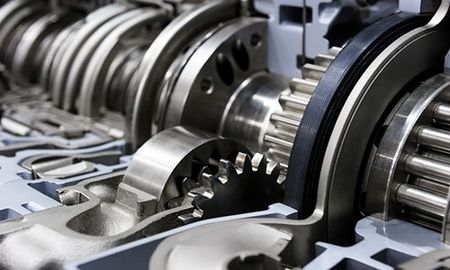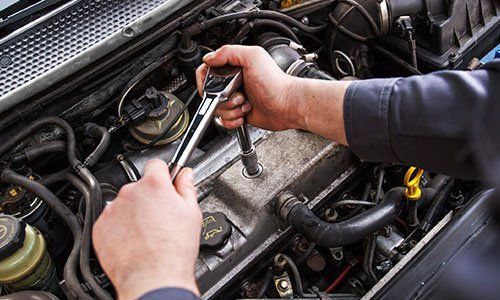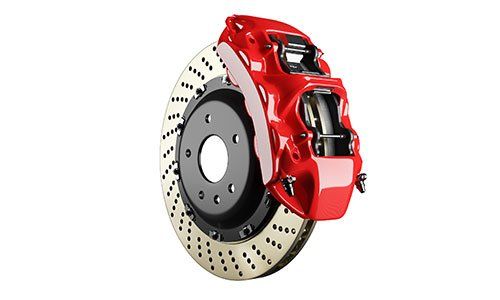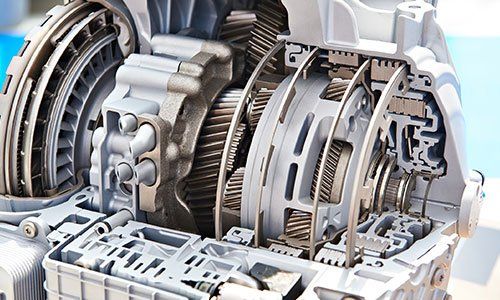Clutch Repair
Admin
Just like brakes, it’s easy for drivers to tell when the clutch
is wearing out and needing a replacement. A worn out, or wearing out, clutch can be harder to handle. You might notice that the pedals seem to ‘stick’ more, and that pushing the clutch in requires more force than normal. A clutch in need of repair can also lose the smoothness of a clutch in good condition; you might notice a ‘shakiness’ or jerking motion when the clutch moves from gear to gear, or even total loss of control at times, as the clutch slips out of gear entirely.
The clutch doesn’t usually last the lifespan of the car. Depending on the vehicle’s make and model, and how well the clutch is treated, the clutch may or may not last more than 50,000 miles. Even the climate of where you live and drive, and your commute-type can affect the clutch. A driver that sits in city traffic all day, inching along, uses the clutch a lot more than a driver that coasts down the highway. Hot weather also affects the usage of clutch fluid, and can cause the fluid to run thin much faster than in a cold climate.
If you haven’t noticed a gradual wearing-down of your clutch, and find yourself in a sudden clutch crisis – the clutch stops working entirely or you notice smoke or the smell of electrical fire underneath your hood, you’re likely in for a surprise clutch replacement.
This type of replacement is something that controls your daily driving experience, so it’s important to take this repair seriously. Locate a good mechanic shop, one that you trust. Since the cost of clutch replacement varies so widely, you want to make sure you’re getting the best deal, while getting the repair done right. Depending on the make and model, a clutch replacement can run anywhere from a few hundred dollars to a few thousand. Small sedans like the Honda Civic can run on the less expensive end of the spectrum, while more “driving-focused” cars like many BMW models can run into the thousands to replace the clutch. It’s best to have a relationship with a mechanic before you find yourself suddenly in need of their services. If you do find yourself in a bad clutch replacement situation, you can contact Endurance Automotive Inc.
to get more information and even a quote on the repair costs. We’re ASE certified mechanics and NAPA-endorsed automotive repair establishments.

I think anyone owning a vehicle can with out a doubt agree having to get new tires can be a real hit to your bank account. Often times it is not a planned expense and once you ‘need’ to get this done waiting is not an option. Whereas it can be very tempting to try to keep ignoring the tread measurements given to you at each oil change it will be inevitable you will need to spend the time and money to keep on, keepin’ on. What most do not take into account, if we made it a priority sooner we would save ourselves a lot of time, money and maintenance. Tires matter...a lot . Changing out your worn tires for a fresh set has a huge impact. Here are four reasons why putting off making an appointment is not the best move. SAFETY Having a new set of tires will provide a cushion of safety for the next 65,000 to 100,000 miles of the vehicle's life (depending on the tire tread-wear rating). At the same time, new tires increase the ability of your vehicle to stop, go and turn. For around $400 every seven years, you can have brand new tires—a very small premium to maintain a safe and healthy driving experience. INCREASED PERFORMANCE The distance it takes for your car to come to a stop, or the speed at which you can enter a turn all depends on the quality of your tires. They determine how much power your vehicle can put to the ground, and whether or not you can brake fast enough to safely control it. Most tires are performance-oriented and are made from stickier compounds with aggressive tread designs. Be sure to choose a tire in the performance category that you intend on using it for (i.e. summer, all-year, racing). BETTER GAS MILEAGE The condition of your tires can drastically affect your gas. If you have a set of worn out tires with an uneven tread pattern, your gas mileage will suffer because your car must work harder to put its power to the ground. For best results, have your tires properly mounted, balanced and always be sure to inflate them to the proper pressure. Also, each time you replace worn-out tires, have your vehicle aligned by a professional mechanic. This will ensure that your new tires do not get worn out prematurely and provide you with the best gas mileage possible. IMPROVED TRACTION The way your tires perform in different road and weather conditions (like snow, rain, dirt and mud) greatly depends on their compound and tread life. Softer tires with "meatier" tread patterns are great for the snow and mud but will hurt your performance and gas mileage in the summer. The best option is to find a tire that meets all of your driving specifications. If you live in an area with four seasons, it may be best to have two sets of tires (that can be easily swapped depending on the season) to improve your safety and efficiency in different weather conditions. If you live in a hot and rainy environment, then a more performance-styled tire with a soft water tread will be more beneficial to your traction needs. Either way, do a little research to see what will work best for you. A BETTER DRIVING EXPERIENCE Finally, the last benefit of a new set of tires is how they can make you feel. New tires with deeper functioning treads and designs are great for long trips because they provide the driver with a smoother ride. Also, new tires are less noisy when compared to worn out tires. Both of these factors are huge for those who have a long morning commute or frequently take long highway trips. Loud and uncomfortable tires can turn a vacation drive into a nightmare very quickly. Okay, Okay, I Get It Hopefully you now have a better picture of how critical your tires actually are. And you should also know that there are steps you can take after purchasing new ones to help preserve them. If you want to keep your fresh rubber in the best shape possible, here are a few tips: • Keep an eye on that pressure. Be sure to check and correct it monthly. • Have your tires rotated. Changing positions can help ward off uneven wear and ultimately lengthen each tire’s lifespan. • Do a monthly tire inspection too. Look for uneven wear, cracks, or blemishes. If you catch any of those red flags, consult your local tire dealer to find out what steps to take. • Pay attention to how your car feels. If you notice any shaking or dragging when you’re on the road, it’s likely that your tires may be the culprit. Again, you’ll probably want to schedule a service appointment to investigate further. By building those simple checks into your regular routine, you can identify tire problems early on and correct them before any unnecessary wear or damage occurs. It’s worth putting in just a little bit of time because it can significantly extend the life of your rubber, giving you more bang for your buck. Most importantly of all, remember not to ignore any issue that you think may be related to your tires. Nothing is worth risking your safety; that’s why it’s always better to remedy the situation right away. If you think that it’s time to replace your tires, get in touch with your nearest tire dealer and make an appointment. When your car is riding smoothly again, you’ll be really glad you did.





